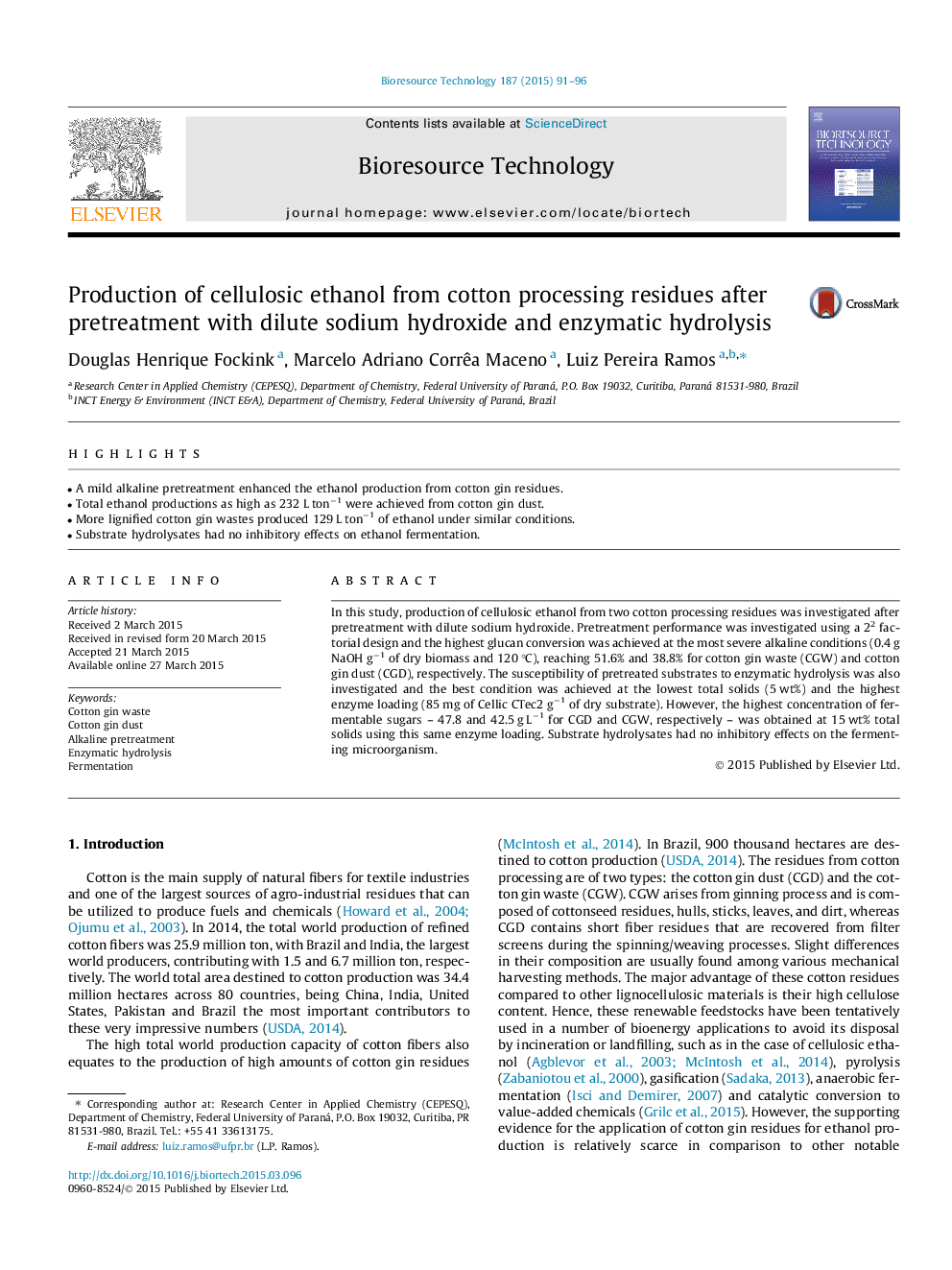| Article ID | Journal | Published Year | Pages | File Type |
|---|---|---|---|---|
| 7074928 | Bioresource Technology | 2015 | 6 Pages |
Abstract
In this study, production of cellulosic ethanol from two cotton processing residues was investigated after pretreatment with dilute sodium hydroxide. Pretreatment performance was investigated using a 22 factorial design and the highest glucan conversion was achieved at the most severe alkaline conditions (0.4 g NaOH gâ1 of dry biomass and 120 °C), reaching 51.6% and 38.8% for cotton gin waste (CGW) and cotton gin dust (CGD), respectively. The susceptibility of pretreated substrates to enzymatic hydrolysis was also investigated and the best condition was achieved at the lowest total solids (5 wt%) and the highest enzyme loading (85 mg of Cellic CTec2 gâ1 of dry substrate). However, the highest concentration of fermentable sugars - 47.8 and 42.5 g Lâ1 for CGD and CGW, respectively - was obtained at 15 wt% total solids using this same enzyme loading. Substrate hydrolysates had no inhibitory effects on the fermenting microorganism.
Related Topics
Physical Sciences and Engineering
Chemical Engineering
Process Chemistry and Technology
Authors
Douglas Henrique Fockink, Marcelo Adriano Corrêa Maceno, Luiz Pereira Ramos,
